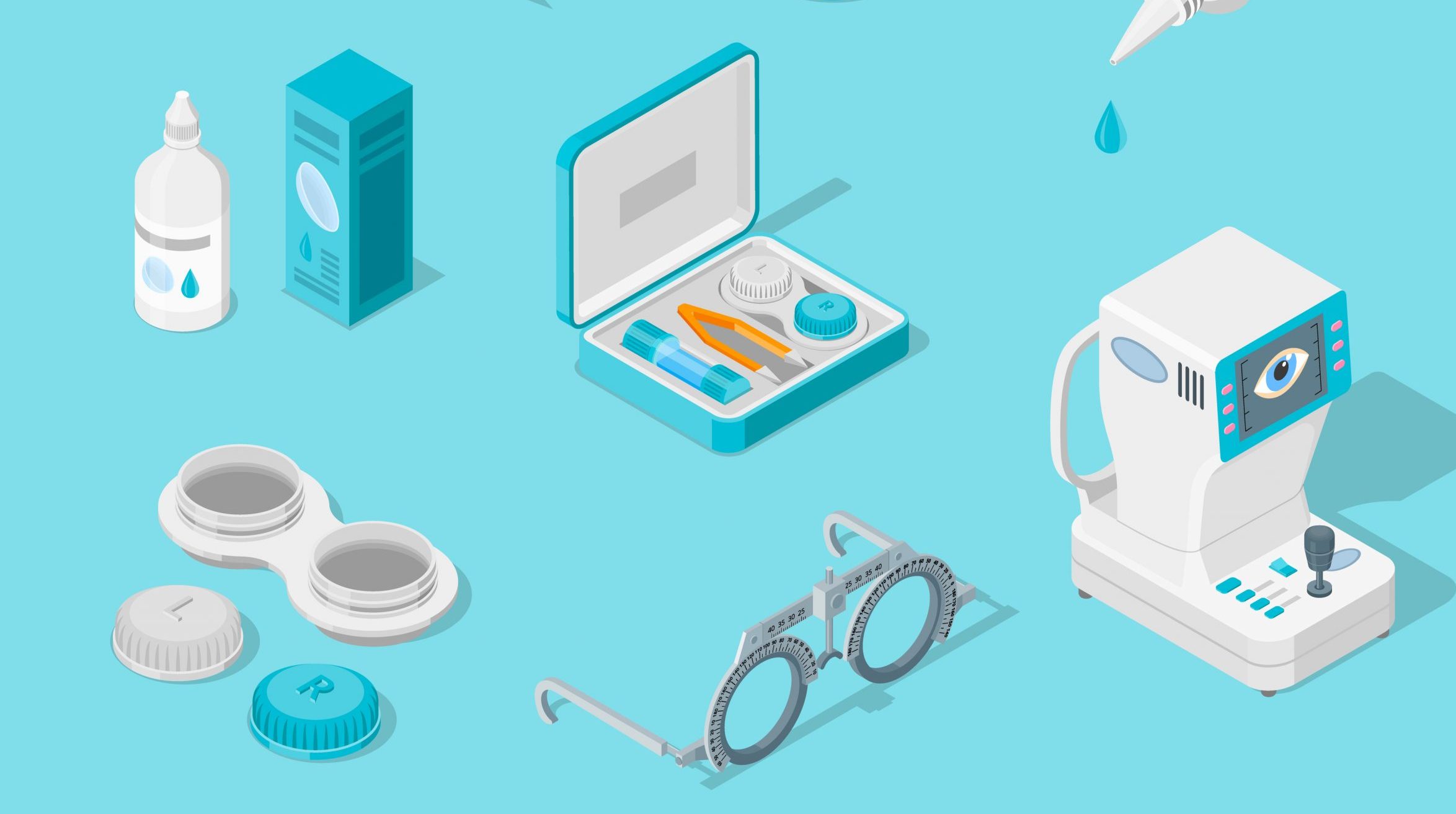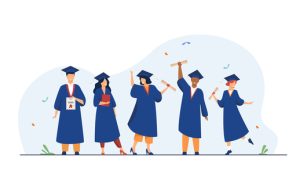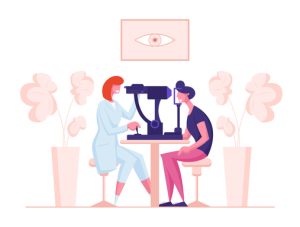Welcome to Optometry!
1. Enrol in your courses
The first thing to do is enrol into your courses – please refer to UoA which courses you should be taking each year. I recommend doing this early so you can choose which lab streams you can be in (morning vs afternoon). As for courses – a small cohort means there is only one stream for the Optom lectures.
2. Find your cohort and join socials
If I didn’t already know people in Optom, I would have never known to follow these pages before uni started. Firstly follow the NZOSS page on Facebook/Instagram – they give updates on events that happen throughout the year and sometimes job opportunities that pop up for your year. To become a member of NZOSS, there is a joining fee, but usually, there is a discounted price for 4 years within the first few weeks of uni. Secondly, look out for your cohort Facebook group – University of Auckland Optometry class of *insert year of graduation* – this is the page where everyone in your cohort will be.
3. Go to Events
There are many NZOSS events throughout the year that can help you make friends and get to know people, not only in your year but other years as well. Below lists the main events throughout the year; there may be more depending on the year.
Orientation day is held at uni, where senior members (usually part of NZOSS) introduce the optometry course and give you a tour of the Grafton campus. You should definitely come to get an idea of who is in your cohort and where you will be studying!
Camp and/or around the Bays is usually on, although you won’t see us running 😭. Not many Part II’s know about this event since many are not following the NZOSS page yet. Whatever the case, camp/around the bays are both fun opportunities to meet new people and get to know other cohorts as well.
There is usually a BBQ held by NZOSS at the start of the year. Again, an excellent opportunity to meet your cohort and your Buddies, who will support you throughout the year! This event is great fun, and we recommend all to come.
Pub Crawl – There are two of these that are held each year. The first one, by far, has the best turnout since it is near the beginning of the year before things get hectic. The second one tends to be near the end of the year. Another great opportunity to socialise and meet new people. Catch us @ pub crawl! 😉
When I came into optometry, I wanted to work in an optical store since I heard that it is very beneficial. I looked around on Seek and adverts on NZOSS and pretty quickly found an optical assistant job. It helped me see the daily work of optometrists, which was very eye-opening. My work also helped me with my studies, as many concepts (especially physiology😳) actually made sense. There are various job openings for optical assistants online and on the NZOSS Facebook group. If you manage your time well, working one day a week and more in holidays is very doable.
Part II Courses
I entered Optom Part II in 2021. I am by no means an A+ student. This is my personal experience and may not apply to everyone, especially since the course is constantly changing. Many of the past Part II students also gave input for this guide, and we wrote only the essential tips.
Semester One:
Note: there are no course books for the lecture content in OPTOM. Older students talked about scaling, where their grades were scaled with the class marks. I’m not sure if our year had any scaling. The exams and content can vary year by year, so don’t take this guide as an absolute!
Optom 216 A
The course starts off with theory and practical labs. First, you will learn about the theory behind visual acuity and chart designs. This part can be not as interesting, but it gets better. Then you will learn about other aspects of optometry, such as binocular vision and visual fields. In the second half of the semester, you will learn about colour vision, retinoscope, and the communication part of optometry. This part is relatively easier and has less memorising than the first half of the semester. Some of the things taught, such as cultural safety, is mainly common sense, so I spent most of my time studying the first half of the lectures.
Semester One Test:
Semester one test covers all the lectures you have done (so far), and in my year (2021), we did it online in person. The test consists of short answers and MCQs. This test is HARD🥺. There are up to 20 options for the MCQ questions, and you have to choose all the right answers while being penalised for wrong responses. I did not do well on this test at all, and this can be a shock coming from Biomed when you are used to getting good marks.
My advice is to know the concepts behind the chart designs, the pros and cons. Although small details can be tested, the test is mainly based on larger concepts. I would focus on the main concepts, e.g. theory of the retinoscope, chart designs, binocular vision and really understand them.
Labs:
The labs are very fun. You will learn some basic eye exams to assess visual function, such as peripheral vision and binocular vision. You will pick a lab partner to practice with each other. Reading the lab guide and watching the lab tutors perform these tests is important. Please ask the lab tutors to observe you perform these tests when you are unsure! There are also labs on colour vision which is a lot of fun, and it isn’t covered in the lab test👀.
You will have 2 lab tests. You will first be tested on the various techniques you learned to assess visual function, and the second is the retinoscope. Some students find older students to practice with, which can help you gain more confidence. People say that the retinoscope lab test is harder, but I found it easier than the first lab test. With these lab tests, it’s important you give the right instructions with the right technique. This can be demanding as it can be intimidating when watched by a marker under time pressure!
This is a group debate-style assignment that is worth a small percentage of your grade.
You will be arranged into groups and given a certain disease case or ethical case to defend. You will work with your team and research reasons as to why your team has the right diagnosis and why the other team does not. In the end, the class votes on whose argument was more compelling and whose diagnosis they agreed with the most. I find this one of the more fun activities, especially convincing the class to vote for your team. Tips for this are to research well and divide tasks within your team. Don’t be afraid to ask Phil for help; he will be glad to help. There will be two PBL assignments in semester one.
I would attend all the lectures, writing notes on the lecture slides. I would then rewatch the lecture at home with the lecture slides, write more notes and make flashcards using the toggle function on Notion. I write questions and answer them in the toggle. I revised by going through the slides and toggling questions, writing down the answer in a refill pad, and drawing diagrams to help my understanding. The content can be overwhelming at times, but it does get better if you revise regularly! Read Piazza regularly as there can be hidden gems of knowledge there!
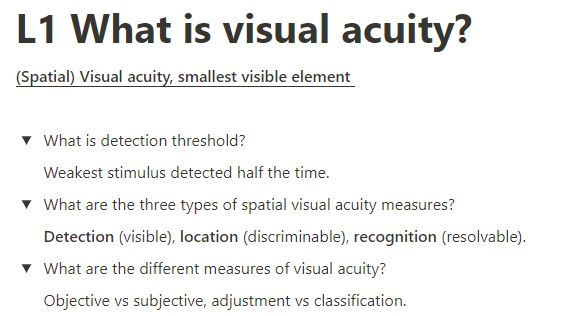
Optom 263 A
I found this course to be quite enjoyable for a person who dislikes maths and mental gymnastics. Many of the concepts at the start are easy to understand, and this is where your NCEA and PHYSICS 160 foundation comes in. Jason will teach you lens equations and physics relevant to optometry. In the second part of the semester, Ehsan will teach physics concepts (no equations) relevant to optometry, such as lens designs and the scattering of light. Many of these concepts will overlap with NCEA Lv3 physics, so I didn’t find this that hard, although there are a lot of things to remember.
Semester One Test:
We did this test in semester two, which gave us plenty of time to revise. The test is split into two parts: Jason’s and Ehsan’s. Jason’s part has MCQs and short answer calculations, while Ehsan’s questions were all SAQs. I highly recommend you to do their practice questions, as there is a bit of overlap in the questions tested🤫. I downloaded and answered their questions in Notability and Google Docs. I marked my answers, and when there were answers available, I checked with my classmates. For Ehsan’s questions, I find it’s important to learn his diagrams as you will probably be drawing them in the test.
Labs sessions are pretty laid back and fun. Although the lab work can be confusing for both the tutors and students, I still enjoyed them. You mainly use a computer programme to do virtual experiments and answer questions. The content is based on concepts you learned in class. It’s important how to use this and what data points represent because you will have a lab assignment at the end of the semester. This lab assignment can be hard at the start. I remember asking many people for help and arguing back and forth for the right solution😤. For this physics assignment, the key is to work with your peers and use Piazza when you are stuck.
I didn’t write notes for the first part of the course in semester one since there was no test. The lecture slides contained everything I needed. I did write notes on Notion for Ehsan’s section, but it was mainly diagrams and explanations of physics concepts. “Geometrical and Visual Optics, A Clinical Introduction” is a must-have textbook for Jason’s section. I downloaded the book into Notability and went through readings and questions after every lecture. I regularly went back to the problems I solved to reboot my memory throughout the year. Looking back, I probably should have written more notes and diagrams on lecture slides since I forgot many things. I fell for the classic “ill definitely still remember this later” blunder. My suggestion is to write notes and draw diagrams for the key concepts and equations so you can always come back to them later.
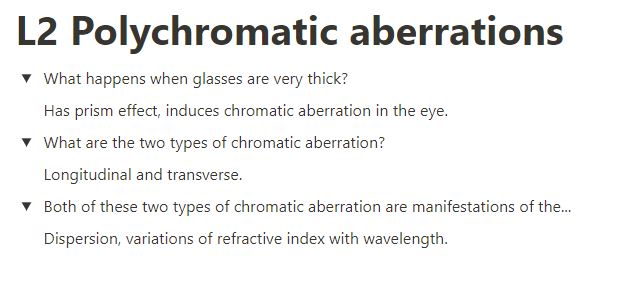
Optom 272 A
OPTOM 272, in my opinion, is the hardest course out of all the second-year courses. There is just so much content on the slides. You first learn about the development of the eye. This module is short, and the majority of the semester is about the anatomy and physiology of the eye, such as eye structures, functions, and neural procession of vision. I find the anatomy and function of the eye to be easier than physiology. I think the physiology and neural processing near the end of the semester is probably the hardest part due to the sheer amount of content.
Semester One Test:
I remember everyone stressing about this test (especially me) since I got lazy revising. Since there were so many lectures, all with a ton of content, we didn’t know which topics would be tested. The test is half MCQ and half SAQ. If the class makes 100 MCQs on Peerwise, Monica will pick some to put on the test. Make sure you guys make those questions because my question was chosen for the test (free marks)! Luckily, the test was much easier than expected; Monica had mercy on us😌. She tested the main concepts of the eye, such as tears, cornea and receptive fields. So if you are feeling overwhelmed for the test, I recommend you to focus on the main concepts of anatomy and physiology, not the niche content such as blood vessels. However, I cannot guarantee that the test style will remain the same. It would be worth taking the time in making good concise notes for future reference when studying for this test.
Labs:
In the first few labs, you will learn about the bones, fissures of the skull and nerves of the eye. There will be many names to remember, and it might seem daunting to fill out all the labels, but trust me, just remember the main bones and fissures, and you should be good. The niche details were not tested at all in my year. Next was a group assignment, where you had to research and answer questions as a group. We assigned questions to each member, and this lab is pretty straightforward. The rest of the labs are dissections of a cow eye, pig head and examining ocular tissues using a microscope. I suggest that you take notes in these labs and pay attention so you can do well in the lab test. The last lab is a group activity where you will join a group to answer various questions for revision. This activity is pretty chill, and it can be a good time to get to know your fellow classmates!
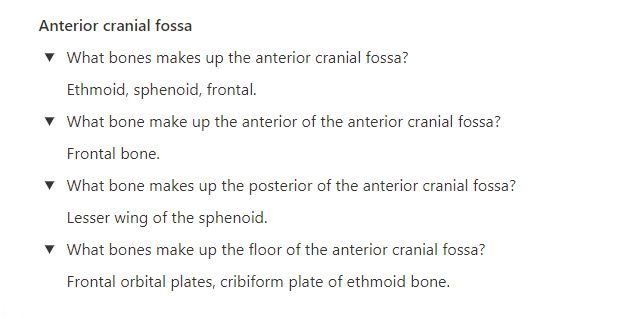
There are 7 stations for the first lab test, and you have one minute to answer the questions presented. Some are naming structures on models, and others are answering questions. It was quite stressful since the minute will be the quickest of your life😟. The test was especially hard in my year. I suggest you really know the main structures and functions of the tissues. There are plenty of practice sessions available, and the MDL lab is open during the day so you can go and practice on the models. You may also need to know the structure of the slit lamp and some of the knowledge from lab 3. You should keep revising labs throughout the semester to prepare for this test. In semester one, 272 is the only lab where I made notes. My notes include toggle questions, pictures and labels of various structures.
There is a semester quiz for 272 per semester, worth 2% each, containing lab and lecture content. Don’t stress too much about it, and it’s designed to test your understanding. You are supposed to do it closed book and find your weak spots, but most people probably do it open book. You have two attempts per quiz, and the average of your two attempts are taken as your mark.
You will do two E-portfolios in semester one and two in semester two. At first, I was pretty stressed since it was a new concept. I assure you it’s nothing to worry about. You pick 4 learning criteria from a list, and you explain 2 that you have achieved and why, and two you have yet to achieve and how you will achieve it. You don’t have to write a huge amount; 100-200 words per criterion will suffice. It’s mainly about personal experiences, so it is different for everyone. Basically everyone gets full marks for this, so as long as you do it on time, you should be fine.
Like other courses, I made annotated lecture slides and made Notion flashcards back at home. For 272, this can be tedious since there are many slides per lecture. For revision, I drew diagrams from memory and tried my best to answer Notion flashcards on a sheet of refill paper. Although niche content can be tested, it’s best to focus on the core concepts when you are feeling overwhelmed.
MEDSCI 203
For labs, I recommend you ask your lab tutors many questions and take notes whenever you can. These labs aren’t recorded, so these notes are essential when it comes to writing your lab report/assignment. Be sure to check Piazza, as many of your questions will be asked by others! Overall, I didn’t find this course very stressful, partly because the final exam is online and open book.
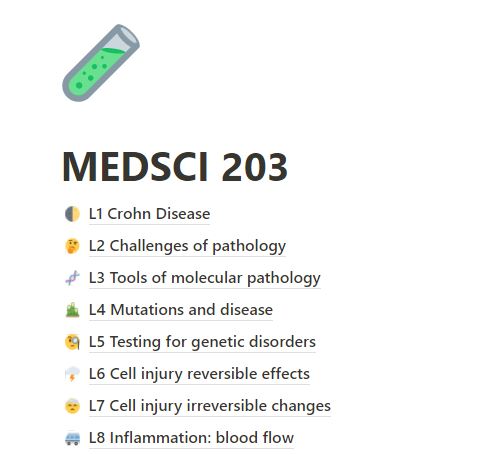
Semester Two:
In semester two, my study methods changed. I still used Notion, but I wrote more notes and added pictures/diagrams rather than toggle questions. This is because more difficult concepts were introduced with fewer knowledge/memorisation areas. More importantly, I was too lazy to make toggle questions for every lecture since there was a ton of content🥺.
Gen Ed
Now for Gen Ed, everyone wants an easy Gen Ed course. You can check out student course reviews for some brutally honest reviews. I did Intbus, and I recommend 10/10, especially with online, open-book exams. Check out our ULTIMATE Gen Ed Guide!
Optom 216 B
In semester two, you will learn about the slit lamp taught by Phil for the first few lectures. Then Ehsan takes over and teaches you various imaging modalities for the eye. You will learn how to spot abnormalities and diagnose them. Ehsan posts pre-recorded lectures online, and you are expected to watch over them. He has a tutorial every week going through the lectures. I highly recommend you attend these tutorials since he has quizzes not included in the recording at the end of the tutorial. Ehsan’s teaching style really suits me since online recordings mean that I can type my notes while I watch his (often very short) lectures.
Semester Two Test:
For us, the semester two test was online. It contained content from semester two lectures up to the test, and it was mainly SAQ with a few MCQs scattered throughout. The majority of the test was on imaging modalities, so you should know how different modalities can be used to diagnose diseases and the pros and cons of each. If you know the main concepts and the theories behind the imaging modalities, you should be fine for this test.

In semester two, you will be learning about the slit lamp and direct ophthalmology. The two lab tests will be based on this. I can’t say much about this because we went into lockdown before the lab test. I definitely found the slit lamp to be the hardest technique during the lab. I suggest that you ask when you need it and let tutors observe and correct your techniques. We had one slit lamp lab and all the direct ophthalmology labs online, and I took notes for both labs on Notion. The online lab test was MCQs and SAQs, not too difficult.
Since we had our final exam online open book MCQs, I can’t say much about in-person exams. Basically, concepts for the whole year can be tested. Just remember to revise the content in the first semester as well. For revision, I picked out questions from the past papers and answered them on a Google Doc. After doing the questions, I checked my answers with my peers.
Optom 263 B
Semester two is mainly taught by Misha, and his concepts are pretty challenging😢. I had to rewatch his lectures many times to understand. Make sure you use Piazza and ask others when you are confused. A lot of his concepts are also quite abstract. My point is don’t be discouraged if you can’t understand the first time you watch his lectures. When I rewatched his lectures and wrote my notes, many of his concepts FINALLY made sense😌. You will be taught vision science, physics of the eye, the evolution of eyes and animal eyes, which I find super interesting. TLDR, rewatching Misha’s lectures is a MUST if you want to fully understand his concepts.
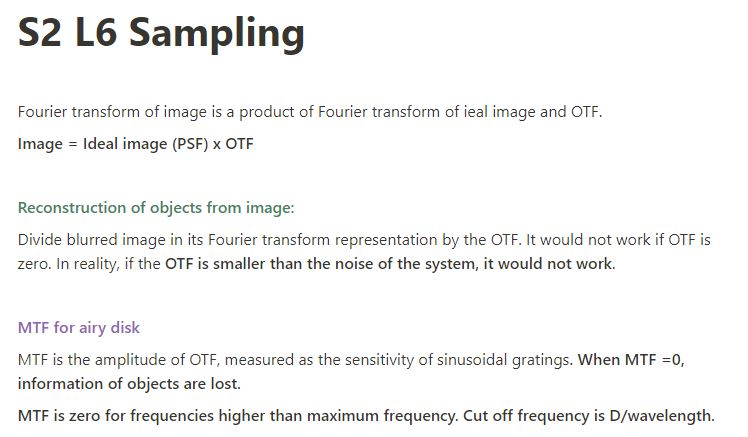
Semester Two Test:
Only Misha’s lectures are tested in this test, and it is near the end of the semester. It’s mainly calculations. This is helpful as you can retain your knowledge for the final exam. We had his test online, and some questions were tricky. You should really know the equations well. I used diagrams for revision as well as relying on my peers. I rewatched lectures and went through his slides to create a formula sheet for the test. The formula sheet is very convenient for this test. Most of his calculations are pretty straightforward, with the odd trick ball here and there. I did past questions and checked answers with my classmates as a part of my revision.
Labs:
The labs are mainly run by Ehsan. For Ehsans labs, make sure you pay attention in labs and ask heaps of questions to the tutors. The labs start off with various lens experiments, then interference of waves. You will need to know the set-up of equipment of the labs, so I suggest you draw diagrams to help with your understanding. Some concepts in these labs are hard to understand, so be sure to listen when the tutors explain. We had the rest of the labs online, and I worked with my buddies to complete the worksheets and made notes accordingly. These labs were mainly about imaging and aberrations of the eye.
There are two lab tests in semester two. The first test was in person, and we were allowed to bring in our own notes (not the lab guide). I typed up my notes which consisted of diagrams and past lab test questions. There isn’t a limit to how many pieces of paper you can take into the exam room as long as it’s your own work. Don’t stress too much about this test. You should be okay as long as you go through each lab thoroughly and make notes accordingly before the test.
We had the second lab test online, and I had some time pressure since I had to draw diagrams on the iPad along with my answer. Make sure you know the diagrams relating to the concepts and complete your lab questions during your labs!
The final exam consists of concepts from semesters one and two. I did the relevant past paper questions in a Google Doc and compared answers. Since there was a lot of overlap between the papers, I only picked questions I hadn’t done before. The structure of the online test was a little different. I found Jason’s calculations harder than the past papers🥺. You need a good understanding of Misha’s concepts to do well. Overall I think the online exam was trickier than in-person exams.
Optom 272 B
This course is mainly run by Steven and Misha. You will see a lot of overlap in content between 272B and 263B. Steven will teach you about spatial and temporal vision and why you see illusions. Misha will teach you colour vision (hard) and how visual signals are processed by the brain. I remember going through the colour vision lecture many times since I was so lost during the zoom lecture. I didn’t find Piazza that helpful, as there weren’t as many questions being asked. Misha holds question sessions at the end of the lecture, so be sure to ask him if you are unsure. Overall, this paper is challenging but interesting once you get the hang of it.
Semester Two Test:
You will be tested on the lecture content from Andrew and Misha, SAQs. For revision, I went through parts of the lecture that I was unsure about and added notes/diagrams on them. I drew and re-drew diagrams on a refill pad and checked the lecture slides until I got it right.
Labs:
The labs are all run by Misha except for binocular vision. You will do experiments as a group in the computer lab on topics such as spatial vision, temporal vision and the mechanisms behind illusions. These labs are a lot of fun, but make sure you note down what the tutor says. Answer all the questions on the lab guide and draw plenty of diagrams. The tutors will go through key concepts vital for the lab test. After each lab, I made Notion notes and redrew diagrams since there’s not much space in the lab guide. We had some of the labs online, and I worked with others in my class to complete the tasks.
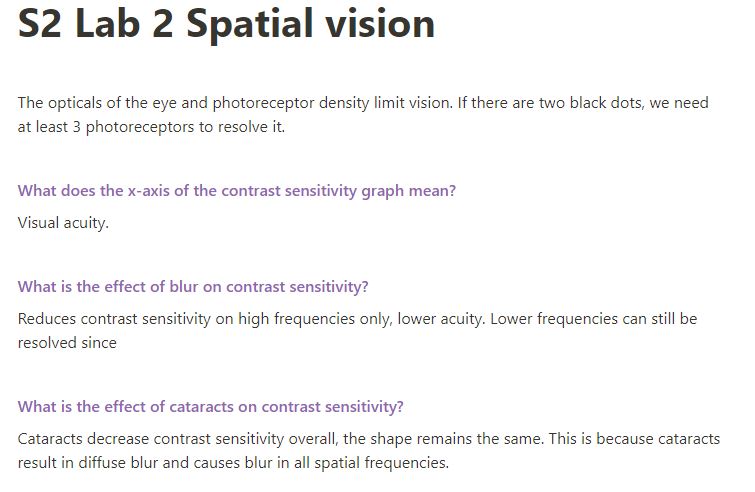
We had Misha’s lab test online due to the lockdown. You had to answer short answer questions, and it had content from each lab. I gotta say some of the questions in this test are pretty tricky, but they were mostly okay. Most of the questions are split into smaller questions, so make sure you keep an eye on the time. I suggest that you go through all the questions during or straight after each lab and make notes accordingly, so you don’t forget when it comes time to revise!
I would say that 272 definitely had the most content to revise for. For us, the exam format was 15 SAQ and 2 LAQ, with the LAQ taking up most of the marks. Although 272 content can seem overwhelming, the very niche topics such as blood vessels and nerves are not really tested. Revise well for the anatomy of the eye and Misha’s topics such as sampling and matched frequency. With Steven’s content, make sure you know his graphs well, such as spatial acuity, temporal etc. These graphs will definitely be tested, so draw them out and annotate them if it helps you remember. I did the relevant past paper questions and marked them with others. Looking at past exams, you should see patterns in test questions and revise accordingly. Since the course is changing every year, test style can also change. There was no MCQs for the 272 final exam, unlike other years.
If you’ve made it to the end, well done. That was a very long read. We wish you all the best in your Part II studies and don’t forget to attend activities. Part II don’t count towards your honours, so remember to HAVE FUN!

